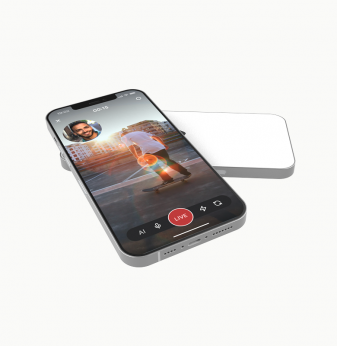Why We Don’t Build OTT Platforms — But Make Them Stronger with Embedded Engineering and QA

The OTT market is booming — but it's also saturated. From global giants like Netflix to regional niche players, everyone is fighting for attention. In this competitive landscape, building a new OTT platform from scratch is expensive, slow, and often redundant. That's why at Promwad, we don’t build complete OTT platforms. Instead, we enhance them where it matters most: at the embedded and system integration level.
In this article, we’ll explain the strategic reasons behind this approach, how embedded engineering and QA bring measurable value to OTT providers, and when it's smarter to strengthen a platform than reinvent it.
Why Full-Stack OTT Development Is Rarely the Right Move
Developing an OTT platform from zero means tackling everything — CDN infrastructure, backend APIs, multi-platform frontends, DRM, billing systems, user analytics, and more. This requires:
- Massive engineering resources
- Deep domain expertise across frontend, backend, and video delivery
- Long time-to-market with heavy QA overhead
- Ongoing investment in DevOps and security updates
Unless you’re building the next Disney+, the ROI often doesn’t justify the effort. Most video businesses instead license existing platforms — then struggle to adapt them to their needs.
That’s where our model fits in.
Embedded Expertise: Fixing What OEM SDKs Can’t
TVs, STBs, HDMI dongles, and Android-based boxes come with manufacturer SDKs. But these SDKs often introduce:
- Performance bottlenecks
- Unreliable playback under load
- Limited customization of system services
- Poor integration with third-party analytics or advertising
Our embedded engineers specialize in:
- Low-level optimization of Android TV, AOSP, WebOS, and Tizen
- Tuning media pipeline latency and buffer strategies
- Customizing OEM firmware to better serve OTT playback logic
- Integrating native DRM and adaptive bitrate protocols (DASH/HLS)
- Enabling OTA updates for streaming apps on constrained devices
These changes don’t require replacing the whole platform — just optimizing the layers that actually affect UX and uptime.
QA That Goes Beyond UI Testing
In OTT platforms, bugs aren’t always on the screen. Crashes can stem from memory leaks, CPU overload, or network handling issues deep in the stack.
That’s why our QA services focus on:
- Device-level stress and soak testing
- Automated testing of app behavior under poor network conditions
- Benchmarking app load times, video startup delay, and error recovery
- Cross-platform regression testing for multi-device rollouts
- Compliance testing for Android TV certification or HbbTV
We work with both UI and embedded teams to deliver real stability — not just surface polish.

When Clients Choose This Model
Our clients in the OTT sector come to us when they:
- Are already using a commercial or open-source OTT backend (e.g. Kaltura, Wowza, Red5)
- Need help adapting their player or app to new Smart TV platforms
- Struggle with latency, jitter, or memory issues during playback
- Want to enable features like content preloading, smart caching, or native subtitle rendering
- Must pass certification for a new platform or region
In all these cases, the goal isn’t to start over. It’s to unlock more performance and reliability from what they already have.
Success Metrics We Help Improve
By working on embedded and QA layers, we’ve helped OTT vendors:
- Reduce video startup time by 30–50%
- Decrease crash rates across STB fleets by up to 70%
- Achieve certification faster for Tizen and Android TV
- Enable low-latency live streams with <3s end-to-end delay
- Scale their offering to new geographies with localized QA coverage
These are real wins that drive user retention and monetization.
Why This Strategy Is Future-Proof
The OTT industry is shifting from platform building to platform optimization. New features like AI-based recommendations, advanced EPGs, or dynamic ad insertion rely on existing video delivery infrastructure — but demand deeper integration at the system level.
Vendors who focus only on frontend design will fall behind. Stability, latency, and reliability will matter more than flashy UIs.
That’s why our hybrid team of embedded engineers, OTT integrators, and QA specialists is becoming the go-to option for video providers who want to grow without rebuilding.
Conclusion: Build Less, Boost More
At Promwad, we believe in targeted, high-impact improvements — not reinventing the wheel. By enhancing the embedded and QA layers of existing OTT platforms, we help clients deliver a better viewing experience, faster, and with lower cost and risk.
If you have an OTT service that needs better playback, faster certification, or cross-platform stability — we’re here to help. Let’s talk about how embedded and QA can amplify what you already have.
Our Case Studies in OTT






